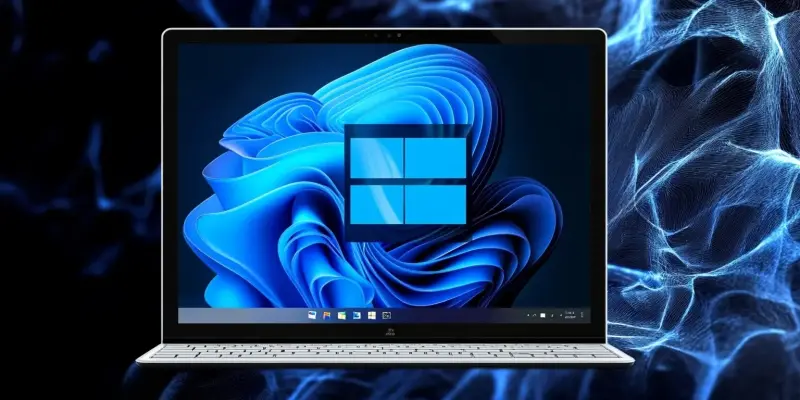With the latest update KB5051987 for Windows 11, users have started experiencing a series of frustrating issues that have raised questions about the stability of Microsoft’s flagship operating system. These problems range from unresponsive functionalities within File Explorer to more severe system errors such as the Blue Screen of Death (BSoD) and even complete OS corruption in some instances. The cascading impact of these problems has significantly affected user productivity and trust in Windows 11, especially amid Microsoft’s push for users to upgrade before Windows 10 support concludes in October 2025.
File Explorer Becomes Unresponsive
Breakdown of Essential Tool
A pivotal feature of any operating system, File Explorer, has become notably unresponsive following the KB5051987 update. This performance issue manifests in various ways, such as users being unable to launch File Explorer from desktop shortcuts and experiencing failures when navigating key directories like Documents, Downloads, and Pictures through the sidebar. These problems essentially cripple one of the most indispensable tools for accessing files and folders, directly impeding daily activities for a broad range of users.
Many have taken to forums to voice their frustrations, pointing out that even basic tasks have become nearly impossible. The inability to access fundamental folders disrupts workflows and leaves many in a bind, unable to carry out routine functions. As tensions escalate, complaints are pouring in about the increasing lack of reliability with Windows 11, which detracts from the appeal of upgrading from Windows 10. For an enterprise heavily focused on getting its customers to adopt Windows 11, these constant hiccups have created a public relations nightmare for Microsoft.
Widespread User Complaints
The volume of complaints concerning this issue underscores its severity. Users across various platforms have been vocal about their negative experiences, with many expressing disbelief that such a fundamental part of the operating system could be so easily destabilized by an update. The problem is exacerbated by Microsoft’s promotion of Windows 11 as a seamless and efficient operating system, which appears to be increasingly far from the current user experience.
Further compounding the issue is the looming deadline for Windows 10 support, set to end on October 14, 2025. Users hesitant to upgrade are finding their fears validated by these ongoing struggles, fueling a reluctance to transition to an apparently unreliable successor. The steadfast flow of complaints also signals that this is not just an isolated glitch but a widely felt inadequacy that needs immediate addressing.
System Instability and BSoD Errors
Blue Screen of Death and OS Corruption
Adding to the chaos, some users are experiencing the dreaded Blue Screen of Death (BSoD) following the installation of the update. The BSoD indicates a severe system crash, forcing a restart and often resulting in the loss of unsaved work. In more dire cases, users have reported complete OS corruption, necessitating a full system reinstall. These serious errors not only disrupt the user experience but also pose a significant risk of data loss and downtime.
Recreating these bugs on fresh Windows 11 installations suggests that the issue is not isolated to a few malfunctioning systems. It reflects a pervasive flaw within the update itself. Despite numerous reports and documented recreations by technical outlets like Windows Latest, Microsoft has yet to offer an official fix or even acknowledge the community-proposed workarounds. This leaves users in a lurch, grappling with inconsistent solutions and a sense of abandonment by the tech giant.
Temporary Fixes and Awaiting Solutions
For those affected, the immediate recommendation has been to uninstall the problematic KB5051987 update and revert to the January 2025 version. Following the path Settings > Windows Update > Uninstall updates has proven to be a rudimentary but necessary stopgap measure. However, this rollback is only a temporary fix that many hope will be addressed in the upcoming February 2025 optional update. Yet, the trend of Windows 11 updates causing significant disruptions is not unfamiliar, raising doubts about the platform’s long-term reliability.
Furthermore, the lack of a robust, rapid-response framework for issues of this magnitude undermines user confidence. The tech community expects a swift and effective resolution to such critical problems, and Microsoft’s slow pace in offering a remedy only amplifies the growing dissatisfaction. Users are left in a state of cautious trepidation, waiting to see if future updates will provide the needed stability enhancements or usher in a new wave of complications.
Looking Ahead: Stability Is Key
Urgency for Microsoft to Act
This tumultuous scenario presents a critical juncture for Microsoft. To restore faith in their operating system, it is imperative for the company to address these stability concerns head-on and ensure that future updates are meticulously tested to avoid similar pitfalls. The upcoming February update is anticipated with a mixture of hope and skepticism as users grapple with their current issues.
Microsoft’s ability to promptly rectify these declining conditions is vital not just for user satisfaction but also for the long-term adoption of Windows 11. If these persistent flaws are not corrected, the operating system’s reputation could suffer irreparably, making it harder for Microsoft to convince users to transition before Windows 10 reaches its end of life. By making stability and reliability top priorities, Microsoft can safeguard the integrity of its OS and maintain user trust.

